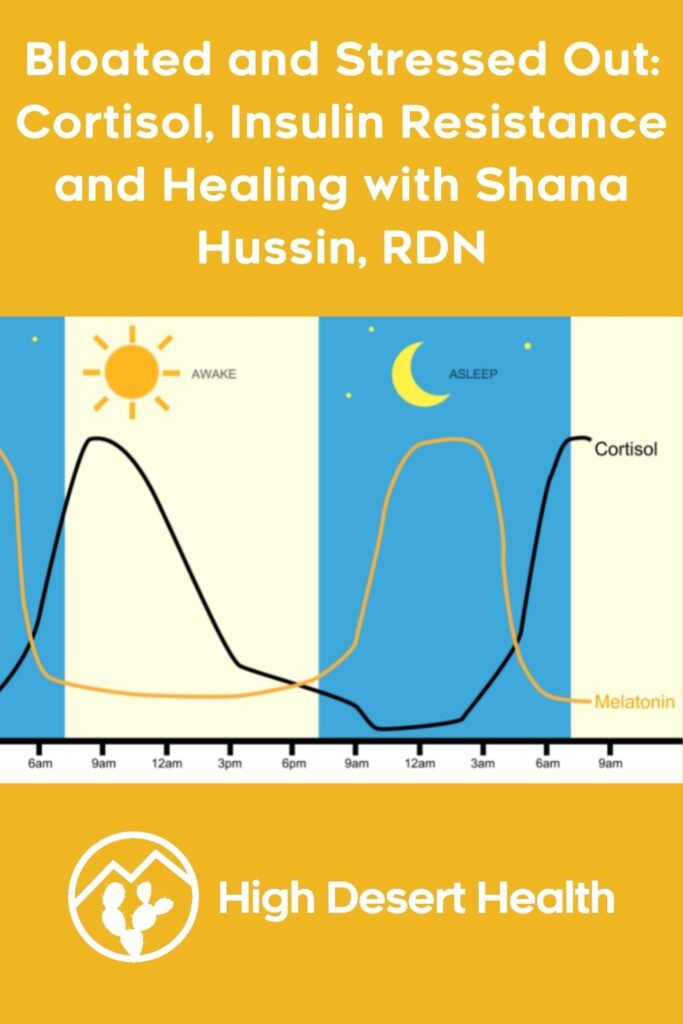
Adapted from episode 158 of The Perfect Stool podcast and edited for readability with the CEO and Founder of Novel Biome, Dr. Jason Klop and Lindsey Parsons, EdD.
Lindsey:
So I had your colleague, Shaina Cahill, on Episode 88 back in January 2023. Can you tell us how your work at Novel Biome has changed since then and what new direction you have taken?
Jason Klop:
It feels both recent and like a lifetime ago. I am still adjusting to the fact that it is 2025. I keep writing 2024 and correcting myself, and soon it will be 2026. A lot has changed. I spent many years treating patients, starting in early 2018 with FMT, and continued until mid-2023. During that period, we transitioned out of the direct-to-patient treatment model. We now focus exclusively on supplying products to clinics, hospitals, doctors and other facilities around the world.
Another major shift is that we became licensed by Health Canada. We now hold a Drug Establishment License, which designates us as a GMP drug manufacturing facility. In the world of FMT, this is notable. We are the first in Canada to hold this license specifically for FMT. The inspectors and everyone involved recognized how unique the product is, and in many ways we are helping chart the course for regulated FMT manufacturing in Canada.
Lindsey:
Okay, very interesting. So what sparked your interest in FMT?
Jason Klop:
My journey has been an interesting one. The origin story, so to speak, began in 2017 with a patient inquiry. My background is as a naturopathic doctor, and from the beginning I gravitated toward digestive health. The microbiome was fascinating, and more than ten years ago it was becoming a rapidly emerging field. That was the lane I chose to focus on, and naturally I attracted patients with those issues.
Conventional medicine does not have many solutions for these patients. They fall through the cracks because there is no cancer, no appendicitis, no clear infectious disease, nothing obvious on labs, scans or imaging. Naturopathic medicine can help because it considers diet, lifestyle and all the contributing factors.
In 2017, someone reached out hoping to become a patient. I always screened people to ensure it was a good fit and that I had tools that could help. During the call, it became clear she had tried everything: integrated functional medicine, holistic approaches and all conventional avenues including Mayo Clinic and Cleveland Clinic. She had ultimately sold everything, bought an organic plot of land, built an environmentally sustainable home, grew her own food, and despite all of this, she still struggled with severe chronic IBS, fatigue, brain fog and likely some autoimmune components.
That is what often happens. When conventional clinics cannot find answers, they simply add more diagnoses in hopes of justifying access to medications that might improve one aspect of the condition.
Near the end of the call, I told her honestly that I did not feel I had anything to offer that would be different or more effective than what she had already done. But I suggested she look into FMT as a treatment option because her history included extensive antibiotic use and other factors that can significantly damage the gut microbiome.
She said she would love to pursue it, but the only option she knew of required traveling overseas, and her health made travel impossible. That conversation is what started the journey in late 2017. By early 2018, I began using FMT with patients, and things have grown and expanded ever since.
Lindsey:
So did she end up doing it with you?
Jason Klop:
This is the unfortunate part of the story. I wish I had a better ending, but no. I spoke with her in September or October, and by January 2018 I had everything in place to begin accepting patients. I called, I emailed, but I was never able to reach her again. She was older, and given her health, my assumption is that she probably succumbed to her illness. She was very committed to the idea of pursuing FMT, but a couple of months can make a big difference in these cases. So there is no uplifting end to that story, but the positive side is that she motivated what has now become our mission to expand access to FMT globally.
Lindsey:
It makes me think about how often I hear people say they have had digestive issues since childhood and now they’re in their 40s, 50s, or 60s, or they have had chronic diarrhea for twenty years. I always wonder how you live with that for so long without looking further. The internet has been around for a while.
Jason Klop:
You cannot plead ignorance.
Lindsey:
I don’t know how people put up with it. Maybe they finally reach a financial place where they can go beyond insurance and what is traditionally offered. But yes, do not wait, people.
Jason Klop:
I think it is a combination of things. Some people think only within the conventional model. Their doctor tells them there is nothing they can do, and they simply accept that as their reality. It still shocks me. Recently, I was in the southern United States and had an Uber driver who shared her whole medical history. She told me about her diabetes, and I asked whether her doctor had ever suggested walking or adjusting her diet to help control her blood sugar. She said no. She believed switching from regular Coke to Diet Coke was enough. I told her that if she stopped drinking Diet Coke, drank water, and walked between rides, she might actually get off some of her diabetes medication. So there is that group. Then there is the other group – people who genuinely try a lot of things but only within the limits of what they know.
Lindsey:
Right. So what different forms of FMT are available now?
Jason Klop:
There has been a major shift toward oral FMT, and that is something we have both seen and helped pioneer, especially through the oral powder we developed for pediatrics. We obtained a patent for it in the United States and are now securing patents internationally. When I began in 2018, I was using rectal enemas, and while they worked for some people, not everyone responded well. Around 2019 and 2020, the research began showing more studies using oral FMT, and clinically we saw much better outcomes when treating orally.
Lindsey:
Interesting, and it is not in a pill, it is just a powder?
Jason Klop:
We do have oral capsules as well, but the oral powder is primarily for pediatrics who cannot swallow capsules. The advantage of the oral capsule is that it is double-encapsulated and enteric-coated so it gets past the stomach acid. Whenever possible, we encourage people to use the capsules. But in a pediatric population, especially in autism, swallowing capsules may not be feasible. Even teenagers may lack the sensory-motor skills required to swallow them.
Lindsey:
So when people take it as powder, or even in capsule format, this is not the old-fashioned “crapsule.” This is a purified powder that does not taste like fecal matter.
Jason Klop:
Exactly. The oral powder is essentially colorless, odorless and tasteless. When mixed with about five ounces of water, it is indistinguishable from plain water. We even had a third-party company conduct a three-way test with real participants whose job it was to detect taste or odor differences. They could not.
This is very different from the early days when people mixed stool with saline and put it into capsules. Now we concentrate the microbiome itself—the active component of the stool—without including unnecessary waste material that offers no therapeutic value.
I recently spoke with a mother and son who were using her stool for DIY FMT, and I explained that one of their capsules might require fifteen or twenty DIY capsules to equal the potency of one purified product. Possibly even more. Stool contains a lot of fiber, which makes up most of the volume. When you remove the fiber and concentrate the microbiome, you are left with the active, medicinal components rather than all the bulk material that does not contribute to therapeutic benefit.
Lindsey:
And how are you getting anaerobic bacteria into a powder without exposing them to oxygen?
Jason Klop:
They are going to be exposed to oxygen, and we do lose some anaerobic bacteria. That is the nature of processing. With fresh FMT, where the donor is right there and the material goes directly to the patient, you preserve more of the complete microbial community. When you add processing steps, each step results in some loss of active forms.
That said, we still perform anaerobic testing on our finished products as a measure of how many anaerobic microbes remain. Aerobic microbes are easy to detect, but for anaerobes, we test as part of our product release, and they remain present at very high levels. Our manufacturing process is not entirely anaerobic, because at the scale we operate, that is almost impossible. Some loss happens, but the reality is that we still do not know precisely which components of FMT drive the benefits. It is not only anaerobes, not only aerobes. It is all of it together.
The metabolites – the compounds the microbes produce—may have as much or more therapeutic impact than the microbes themselves, though it is likely the entire ecosystem working in combination. I often compare it to the Amazon jungle. It is an entire living biosphere. It is not just the trees. If it were only trees, the ecosystem would not function the same way. That is one reason probiotics do not produce the same outcomes as FMT.
Lindsey:
And is each end product sourced from one donor, or is there a combination?
Jason Klop:
We do not combine donors. As a GMP drug manufacturing lab, everything is tightly controlled. There is no crossover between donors. We operate clean rooms, we sterilize between production runs, and we conduct environmental monitoring. It is an exhaustive process.
That said, within a treatment regimen, you could access more than one donor’s product to increase microbial diversity. Instead of receiving material from one donor, you might receive material from two or three across the course of a protocol.
Lindsey:
So where could someone access your products outside the United States, where FMT is not limited to C. diff? Are there clinics using your products in other countries for other purposes?
Jason Klop:
The best approach is to work through a healthcare provider who is open to integrative or forward-thinking treatments. Have your practitioner reach out to us. This morning, for example, I spoke with a doctor in Pasadena, California, who learned about us through a patient’s treatment. That is often how access happens.
We do not sell directly to patients. But if a doctor is open to it, we can explore how to support them. Depending on where someone is located, we may have a partner clinic in that region, or we may not. It depends on the country and the regulatory environment.
Lindsey:
So what you’re saying is that sort of in the way that doctors use other drugs off label, that a doctor could, in theory, use your FMT product off label for, say, ulcerative colitis or something else.
Jason Klop:
The FDA has some clear but unclear guidance on FMT in the US. I think it’s intentionally unclear. And so in some ways, it’s up to the doctor’s interpretation, in some respects, but, but there are some avenues. Off label prescribing has been happening since the dawn of time, since the dawn of prescriptions. Also, there are some obvious paths, like going with an I&D and sympathetic use. I forget the name of it, cases where there’s really no other option they can get access to. So there are some very clearly defined paths. But then there are some, maybe okay paths, so ultimately, it just depends on the patient, what their condition is and some other variables.
Lindsey:
I know that it’s relatively easy, relatively — still expensive, but you can access FMT in the UK. You can access it in Australia. And you, for a while, were operating out of Mexico. I think there’s a Bahamas clinic too. Are there any places that have come up closer to here or less expensive than those others that are using your product?
Jason Klop:
We have lots of doctors, a whole network, that use our products in the US.
Lindsey:
For other conditions?
Jason Klop:
It depends what – we’re not controlling how.
Lindsey:
So what conditions do you think FMT is most promising for, other than C. diff?
Jason Klop:
Yeah, the C. diff is an obvious one. I mean, the research is just exploding as far as the different conditions that are being included under the banner of ways in which FMT is showing benefit or progress. The obvious ones are, of course, like the GI ones – IBS, IBD, so anything that’s like, obviously GI related is an obvious candidate.
But then we’re seeing a lot of great things in neurological diseases, where, whether it’s autism, which I told you, we treated a lot of Parkinson’s dementia, those types of things, are showing a lot of progress. And then I think the area of cancer treatment is really fascinating, where FMT is actually improving the benefits, like where a patient was not responding to the drug, they do FMT, and then they start responding again. So I think that’s really exciting. Literally, if you go on PubMed and you search any cancer: pancreatic cancer and the microbiome, like every cancer, and I’ve done this before just out of my own personal curiosity, they all have studies that are linking it in some ways to the microbiome, whether it’s cause or correlation. It’s kind of hard to distinguish, but all of this stuff traces back to the microbiome in some way. And so it is fairly intuitive to think that if you improve your gut microbiome, you’re going to better be able to utilize the drugs, the nutrition or supplements, or whatever you’re using. You’re going to have a better effect, more durable effect.
And I think the reality, and probably what we’ll see more and more, is the synergistic effect of a microbiome-based therapeutic with other interventions. Stem cells being another obvious one where there’s some pretty interesting research around graft versus host disease and the improvement of the microbiome through microbiome therapy. So, yeah, I think there’s a lot of synergistic things where FMT combined with some other treatment will all combine, get a better, positive benefit. And then there’s cases where patients aren’t responding, and they could respond if their microbiome was in a better, healthier place. And there’s a whole other avenue, which is the anti-aging, longevity biohacking. I mean, I think why we die is our microbiome. If our microbiome is not healthy, we’re getting more inflammation. More inflammation leads to more disease. And, you know, the progression just keeps going from there.
Lindsey:
So, what kind of clinical trials are they running these days, using FMT? What’s the newest?
Jason Klop:
You name it. I mean, it’s across all kinds of areas. I think the cancer one is a newer, more interesting area that’s up and coming, schizophrenia, bipolar. I’ve seen some pretty fascinating stuff. You know, they keep going with things like IBD, all sorts of colitis, Crohn’s, autism. I mean, a lot of areas are just continually building on the established knowledge. But, yeah, it’s kind of across the board. There’s lots.
Lindsey:
Now I remember what I was going to say. So about, gosh, three years, four years ago, I started the podcast in 2018 so now probably longer than that, I interviewed someone who was involved with cancer research, and he was talking about how FMT was making immunotherapy more effective. Great interview. Did not record.
Jason Klop:
Oh no.
Lindsey:
I did not record the whole interview. So I approached him about re-recording. Dude just didn’t even respond. I don’t blame him at all. But anyway, it is kind of tough though. You have a friend, they’re diagnosed with cancer, and you’re just like, you ought to get an FMT. If their doctors are not telling them about it, they’re going to be like, “you crazy!”
Jason Klop:
Yeah, I don’t know. I see a different side of this, where people coming into the space are usually already somewhat informed. When we get past the poor branding of crapsules and things like that, because they look no different than a probiotic, the concept really isn’t that extreme. It doesn’t taste like anything, it doesn’t smell like anything, and it’s actually pretty straightforward. Some people will still be turned off by it, but if you’re dying from cancer, you make your choices.
Lindsey:
Yeah, it becomes a completely different thing when you’re talking about a colorless, flavorless powder versus having to find a donor. Then there’s the issue of access. Very few doctors are willing to help someone obtain something they’ve never used or barely heard of. What are the typical protocols for FMT in clinical trials regarding antibiotics beforehand, the duration, diet, and related factors?
Jason Klop:
Yeah, this is a really interesting area, and it’s evolving quickly. As mentioned earlier, it used to be that FMT was done almost exclusively via rectal delivery through colonoscopy or enemas with very short protocols. That was always my concern with what I saw in the scientific community. The protocols were too short, and clinically they just weren’t effective.
Before Dr. Adams’ work at Arizona State University on FMT for autism using a longer protocol of about eight weeks, the general assumption was that FMT didn’t work in the autism community. The issue was not that it didn’t work but that the treatment duration was far too short.
C. diff was the first condition where FMT worked exceptionally well. Naturally, people assumed that since it worked for C. diff with a short protocol, the same approach should work for MS or IBD.
Lindsey:
And C. diff, it was one shot, right?
Jason Klop:
Yeah, one treatment. One enema, a couple of capsules, one enema, or one colonoscopy, and 80 to 90 percent of people experience complete resolution. The issue is that C. diff is a very acute condition. People haven’t been dealing with C. diff for years or decades, so their microbiome is more pliable. It can shift quickly. It shifted quickly into C. diff, and with the right input, you can likely shift it quickly out of C. diff.
That was the broader problem. Research was using the same treatment protocols developed for C. diff when studying more chronic, complex illnesses. In some cases, there were benefits, but not very impressive ones. As a result, the conclusion became that it doesn’t really work for those conditions, and it was largely dismissed until later.
By 2019–2020, the protocols had become more extended, with treatment occurring over a longer duration. That became possible with oral capsules, because you can treat over time with capsules in a way you cannot with repeated colonoscopies. Protocols vary widely. Treating with antibiotics prior to FMT is now standard of care in research. Vancomycin is a common choice, though the antibiotic may vary by country or context.
I strongly advocate for including antifungals in pretreatment when mold is present. Addressing mold or other fungal issues can remove barriers that prevent or limit engraftment of new microbes. Pretreatment is fairly well established, aside from the fungal component I mentioned, which is not typically included.
The start of treatment usually involves a loading dose followed by a maintenance dose, which is similar to our approach. There are many variations. Some involve 12 capsules a day for five days, followed by 12 capsules a week for six weeks. The approaches differ, but they share the idea that higher doses over repeated periods offer benefits.
Because treatment is expensive, our goal has been to determine the minimum amount needed to provide long-term benefit. This is being considered more broadly as well. For instance, some C. diff products approved for use involve only 12 capsules. If 12 capsules work, there is no need to use 25 or 30.
We are still figuring out the optimal amounts, but there are many individual differences between patients. Ultimately, you need to start the treatment, observe the response, and ideally have a doctor tracking progress with validated symptom measures and stool or urine microbiome assessments, or other diagnostic panels. These help determine what metabolites are shifting and how the body is responding. That information then guides how long treatment should continue.
Lindsey:
So what criteria do you use for donor selection? Are you getting into the details of what the stool looks like visually, whether there are butyrate producers, or whether it provides what is missing in the microbiome of the intended recipient?
Jason Klop:
We get very far into the weeds. We meet all the standards required by any jurisdiction we sell into, with Health Canada being the primary one since we are regulated and licensed there. That includes all the infectious disease testing and the standard donor screening requirements.
We go above and beyond by selecting younger donors, typically 30 or under. We thoroughly assess diet quality, physical fitness, and activity levels. We also review immediate family medical history to ensure there is no early onset of conditions with microbiome links, such as psychiatric disorders, early cancers, or similar concerns. This acts as an added layer of screening to determine whether someone could be accepted into our program.
Only about 1 percent of applicants become donors, so the process is extremely stringent. Once selected, donors undergo stool, urine and blood testing to screen for anything pathogenic. They also complete daily questionnaires. Within our quality department, every stool sample brought into the lab is evaluated to ensure it meets criteria, including the appropriate Bristol stool chart range. Any sign of blood, mucus or diarrhea results in immediate disposal.
There are many checks and balances before someone becomes a donor, and once they are active, we continually monitor them. If they become sick, catch a cold, get a tattoo, or travel, they may be temporarily removed. Many factors go into maintaining donor suitability.
Regarding your point on donor–patient matching, that is something we are actively working on. There is broad acknowledgment in the medical community that matching matters, but we still do not have established criteria to determine what features would indicate an ideal match. This represents the future of FMT, and we hope to contribute to developing that science. We are building and learning as we go.
The goal is to eventually refine treatment outcomes by identifying who is likely to respond and who is not, ideally before treatment begins. It would be incredibly helpful to have a test that indicates response likelihood and, if positive, identifies the ideal donor. We are not there yet, but we believe that level of precision is where FMT is heading.
Lindsey:
Seems like AI would be useful in this respect.
Jason Klop:
100 percent. Yes, absolutely.
Lindsey:
So are you looking at the butyrate producers? The more I work in this field, the more I think it’s all about the butyrate producers, or more broadly, the short-chain fatty acid producers. That seems to be the hinge on which good gut health turns.
Jason Klop:
You’re probably right, but there is also the possibility that we may be completely off base in that assumption. The production of short-chain fatty acids that moderate inflammation, support healing of the gut lining, and contribute to all the downstream effects is a very plausible explanation for why this works. At the same time, I don’t think it comes down to only one factor. It’s likely a combination of multiple mechanisms working together.
If you removed butyrate production entirely, there would still be other benefits occurring. But I agree that it is a key piece. In terms of screening, we are not specifically testing stool samples for butyrate-producing species, but donors who make it through our selection process almost certainly have them. To have good health, a person needs a robust microbiome, and that includes butyrate-producing bacteria.
Lindsey:
Yeah, and of course, that’s what antibiotics tend to wipe out. So what is the criteria around antibiotic use for your donors?
Jason Klop:
We have many donors with no lifetime history of antibiotic use, which is our preference, though not all meet that standard. We set a limit on how many courses of antibiotics a donor can have had in their lifetime. I’m not directly involved in every detail of donor screening, but a few lifetime uses is acceptable. On average, it has been several years since any donor last used an antibiotic. You’re right that overuse would wipe out key microbial species, and we screen to avoid that.
Lindsey:
Yeah. As a mother, I’m proud that one of my sons has only ever had antibiotics as a baby. We adopted him, so that was before he was with us. They handed him to us with antibiotics and told us to continue them, but he vomited every time. We decided to stop because he only had a cold. We didn’t need to give him antibiotics for a cold. My other son, as far as I remember, has only had antibiotics once, for his wisdom teeth removal. I don’t know how I was so lucky to avoid needing antibiotics for my kids, but I was.
Jason Klop:
It’s hard. If you take your child to the doctor, most of the time an antibiotic is going to be suggested. That is shifting, but the conventional insurance model plays a role. The responsibility falls on the doctor and their malpractice coverage. If they say it looks viral and recommend rest, fluids and monitoring, but the child ends up having a bacterial infection, the doctor is held liable for not prescribing an antibiotic. Many choose not to take that risk.
Antibiotic resistance is a major issue. The WHO predicts that by 2050, antibiotic resistance will kill more people than cancer does today. It’s a huge problem. Some people are aware of it, but it still isn’t receiving the level of urgency it deserves. FMT plays a role in combating antibiotic resistance, as it does with C. diff, but there are many other pathogens that could emerge and cause far greater harm.
We need strong public health efforts to reduce antibiotic overuse. At the same time, I’m hopeful that AI and emerging technologies will help us develop more precise antimicrobials. CRISPR-based therapies and other innovations are on the horizon. But we can’t rely solely on optimism. We need practical measures to reduce unnecessary antibiotic use. So thank you for doing your part with your kids. I’m doing the same.
Lindsey:
Yeah. Well, I’m probably contributing a bit through my podcast. The people who find me rarely say they want to take antibiotics. Maybe Rifaximin, because that is a different class. From Mark Pimentel’s recent webinars, their studies suggest it targets the cause of SIBO, E. coli and Klebsiella, without wiping out beneficial microbes. It supports their return by removing the overgrowth. That said, my other question is whether I’m being naive about antibiotic resistance. Am I thinking it will not affect me because I will rely on herbal antimicrobials that are not subject to resistance?
Jason Klop:
Yes, except that in more severe cases an herbal antimicrobial would not knock out C. diff, which is an antibiotic-resistant organism. You might have some safety in certain situations, but no, I do not think it is realistic to assume you are protected from resistance issues.
Lindsey:
Right, okay. But then there are phages. That is another option.
Jason Klop:
Yes, and that is another theory for why FMT works, the potential role of phages. But I think the situation is more serious. I am usually very optimistic, but in this context we need to treat the issue with much more urgency. The problem is a combination of antibiotic overuse and excessive cleanliness. Hospitals deal with this constantly. Sterilization is necessary to prevent spread, but the more you try to eliminate microbes, the more the survivors evolve. They adapt to become more evasive, just like any living organism trying to withstand threats. Antibiotic-resistant microbes are doing exactly that. Their goal is survival, even when it harms the host.
Lindsey:
So I had Christian John Lillis from the Peggy Lillis Foundation on episode 152 of the show, and he mentioned two products that are available now on the market instead of traditional FMT, the Vowst and Rebyota. Can you tell me more about those?
Jason Klop:
Well, those are basically traditional FMT. Rebyota is FMT. It is a rectal enema. Vowst is not what you would typically think of as FMT. It is more of a phage-focused approach. They treat the material with alcohol, which kills almost everything except some of the phages. That is essentially what they are using.
Lindsey:
I didn’t realize that. So they are not doing the same thing you are doing. What you are doing is…
Jason Klop:
No. Rebyota is fairly similar in the sense that it is a live, biotherapeutic FMT, a full microbiome product, but it is only delivered rectally and intended for C. diff. I do know doctors who are using it in oncology and other interesting areas, which is exciting. Vowst is very different. It is FMT-esque, but as I mentioned, they are killing almost everything except the phages.
Lindsey:
So are you going to give your product a name so it is not just called FMT?
Jason Klop:
We are not going through the drug approval process at this point. That costs around one hundred million dollars, which is not in the budget. Our goal is to support more research and move our product into clinical trials, beginning here in Canada. The FMT regulations in Canada differ from those in the United States and elsewhere, but naming and formal drug approval may eventually be considered.
Lindsey:
So how many donors do you actually have?
Jason Klop:
I actually do not know the exact number. You might appreciate this story. When we received licensing, I was involved in more aspects of what we do, including donor screening. My background as a naturopathic doctor gave me a strong sense of what makes a good donor, and we followed all guidance. But even that is something I am no longer allowed to be involved in. We now have a medical doctor on staff who conducts all donor screening and orders all the labs.
When inspectors came, they reviewed our organizational chart and told me I could not be involved in any of those processes. I asked what my role should be, and they said “executive stuff.” So that is essentially what I do now. Executive stuff.
We are screening many new donors to keep up with increasing demand. I would estimate we currently have around five to ten active donors, and by the end of the year we may be closer to fifteen to twenty.
Lindsey:
How do you recruit people?
Jason Klop:
Through many methods: social media, advertising, online local newspapers, flyers and other outreach efforts.
Lindsey:
And where are you located?
Jason Klop:
We are in the Fraser Valley, in Chilliwack, which is near Vancouver in Canada.
Lindsey:
Okay, so there’s a decent population to recruit from.
Jason Klop:
Yes. A couple million people, and with a large enough lab, we have a driver who is constantly on the road picking up samples.
Lindsey:
Oh, so donors do not have to come to the lab? You can pick up from their home.
Jason Klop:
Yes. We have a dedicated driver, temperature-controlled transport, the whole setup.
Lindsey:
That probably makes it much more accessible.
Jason Klop:
It does. Everything is handled with full chain-of-custody procedures.
Lindsey:
So how do you reimburse someone for a donation?
Jason Klop:
Twenty-five dollars per donation, and there are additional perks as well. If you know anybody who’s listening and you happen to be . . .
Lindsey:
. . . living in Vancouver? My listeners are not the people you probably want donations from. These are people with gut health issues.
Jason Klop:
Maybe not.
Lindsey:
Maybe their spouses.
Jason Klop:
Or someone they know. Everyone knows someone who qualifies.
Lindsey:
Yes, they might know someone. So if a person wanted to preserve their own stool in case they needed it later to reintroduce it, could they store it in the freezer? What is the best way to preserve it?
Jason Klop:
This is a great question. A few years ago I was excited about launching a service where people could bank their own microbiome and have an autologous FMT option. I still think it is very exciting. We now have someone interested in partnering with us, a major player in the microbiome testing space in the United States, and we are in early discussions.
We previously offered this as an optional service. People could bank their own microbiome, and I think our website was personalbiomebank.com. It still exists, but among many initiatives, it was not one we pushed heavily. There is also a significant educational component. Many people said they were not healthy enough yet and wanted to improve before banking. Others wanted to bank the day before a scheduled surgery, which is not feasible because we cannot obtain and process stool quickly enough.
I think the biggest opportunity is in pediatrics, because children are prescribed the most medications. Parents would likely adopt this service far more readily than adults who have not taken antibiotics for ten or fifteen years.
As for storing it in your home freezer, the bacteria die quickly. Freezing causes them to lyse. To preserve them, you would need a cryoprotectant such as glycerol, trehalose, or skim milk to reduce damage during freezing. Without that, most bacteria will not survive. It is not ideal, but it is better than nothing.
The ideal solution would be a convenient banking service like the one we envisioned, allowing people to store their microbiome and periodically update it. I think this represents a major future opportunity in the field. And who knows, we may play a role in developing it. If anyone in the space is interested in collaborating, we are open to it.
Lindsey:
Well, if they could have their microbiome put into capsules in purified form, how long would those last?
Jason Klop:
That is the opportunity. That is exactly what we developed. We would take your stool, store it, and when needed, encapsulate it and ship it back to you. The whole concept was that it could be stored much longer if a cryoprotectant was added and it was kept in a very cold environment. Then, when the time came, we could process it into capsules. We worked out a lot of those logistics, but other priorities took over, and at the time there was not a clear demand.
Lindsey:
So long and short, it is better to keep it in the frozen form than to process it immediately. How long does an actual processed FMT capsule last?
Jason Klop:
Two years. We place a two-year expiry from the date of manufacturing. We are continuing to do long-term shelf-life studies to determine the true lifespan of the product, but at least two years is supported. Realistically, in a freeze-dried format, ten years is not unreasonable.
Lindsey:
I have had clients who wanted to do DIY FMTs and said their nephew is healthy. But then we ran stool tests on both nephews, and one had an overgrowth of H. pylori, and the other had a different pathogen. One even had C. diff. I could not recommend introducing that into someone with fragile health. So I’m curious: for something we consider pathogenic, is there a certain amount that is acceptable in an FMT?
Jason Klop:
This is interesting. For H. pylori, we screen for it. We recently had someone who was a perfect donor on paper, and the only issue was H. pylori, which meant we had to exclude them from the donor pool.
Lindsey:
So any H. pylori is a no-go?
Jason Klop:
For us, yes. But if you are using Doctor’s Data, GI-MAP, or similar tests, those are not very reliable for detecting H. pylori.
Lindsey:
You mean a stool antigen test is what matters, not DNA testing or metagenomic sequencing.
Jason Klop:
Yes, exactly. The reason I mention this is because in some research, Denmark for example, they do not exclude donors with H. pylori if they are asymptomatic. Being asymptomatic is considered an indicator of a healthier microbiome overall. It is quite interesting, and the research is available publicly.
Lindsey:
That would fit with the entire premise of missing microbes.
Jason Klop:
But we are regulated, and that is one of the things we cannot have in our product, so we do not allow it. It is simply an interesting fact, and perhaps regulations could change someday, although they probably will not, because people generally view H. pylori as pathogenic. Yet when you look at the studies, those individuals often have broader microbial diversity.
More broadly, FMT is extremely safe and effective. The research is very clear on that. The problems I have seen in all my years working with patients have come from DIY FMT. Donor screening is not happening at the level it needs to, and people cannot access the necessary labs for infectious disease testing. Many of the required tests can only be done through hospitals. You need to control the risks. You do not want a product that is successful but also has the potential for significant harm. If someone has compromised immune health or is fragile in other ways, the risk–benefit ratio simply is not appropriate.
I understand the desperation some people feel, and why they might try anything. But where I have consistently seen things go wrong is with DIY FMT. There is a Netflix documentary- possibly called Gut– where a woman used her boyfriend and a friend as donors. She later developed anxiety, and her boyfriend had anxiety. She also used her brother, who had acne, and she began showing similar issues. These traits can be transferred if not properly screened for. It is risky, and that is why FMT is now so regulated.
Lindsey:
So what actual stool testing do you do on the donors?
Jason Klop:
It is exhaustive. I do not know the full list off the top of my head, but it includes a wide range of pathogens.
Lindsey:
Okay, so it is focused on pathogens. But do you run anything like metagenomic sequencing or a GI-MAP?
Jason Klop:
We have done those occasionally on donors, but microbiome testing is inconsistent. You can send the same sample, on the same day, from the same person, split into two and labeled under different names, and you will get different results. I have done this myself. The results are hit or miss, so we do not rely on them as a determining factor for accepting or excluding donors. Out of curiosity, I have spent about seven hundred dollars on microbiome tests because I enjoy learning from them, but they are not something we use exclusively.
Lindsey:
I have actually been thinking about doing exactly what you described- taking one stool sample, sending it to five different labs, and assuming that whichever results are most similar are probably the most accurate, and if there’s one that’s an outlier, that that’s probably the incorrect one, if I mix it up well.
Jason Klop:
The better way to gather the data is to send two samples from the same person to the same lab, labeled under different names or dates. You need to be a bit elusive, although I am not sure they track names closely. I have done this before, although it was a few years ago, so things may have improved. I know other clinics still doing this and finding the same inconsistencies. This is not to criticize stool testing companies. They are doing valuable work. It simply highlights the importance of interpreting results in the context of a patient’s symptoms. The test should not be treated as the absolute truth.
I used to ask patients what mattered more: a result shifting from yellow to green, or their gas, bloating and fatigue improving. They always said they cared more about how they felt. So I would ask whether they really wanted to run the test. If they felt better but the test looked worse, what mattered more? It is all about educating the patient. When viewed in the full context, testing can be informative and can guide treatment. Some people also need the motivation of seeing results on paper before making changes. Testing can be helpful for that. But overall, its utility is still limited.
Lindsey:
Yes, I agree. Because of my work as a podcaster and gut health coach, I have received various free tests and I have paid for some. I have post-infectious IBS, and for me it is like whack-a-mole. One test shows a little C. diff, the next shows a little enterohemorrhagic E. coli. People with this condition are several times more susceptible to food poisoning, so whatever pathogen is passing through my system at the time shows up on that test. The same thing can happen with clients. Something passing through can appear on a test, whether or not they were symptomatic, depending on what else is in their stool. It really is just a snapshot in time, even before considering that the labs are not perfectly accurate.
Jason Klop:
Things change very quickly. If you shift your diet today, your microbiome shifts tomorrow. The changes happen fast, which is also the good news. Small positive changes add up and make a meaningful difference.
Lindsey:
Yes. As I have added polyphenols, fibers, and prebiotics, my microbiome has become more diverse. It brought back things that had disappeared on earlier stool tests. It is possible to make real improvements.
Jason Klop:
That is the distinction between who may respond to FMT. If someone has had many antibiotics, they may have completely wiped out certain strains. Improving diet and adding polyphenols is excellent, but some strains may never return unless something like FMT is incorporated. It varies, but diet is always the foundation.
Lindsey:
So where can people find you and Novel Biome?
Jason Klop:
The most obvious place is our website. We have social media accounts (Facebook, Instagram, X), YouTube, LinkedIn, and podcast platforms where we share content on FMT and the gut microbiome.
Lindsey:
And if a doctor wanted to reach out about obtaining a product, they would go to your website?
Jason Klop:
Yes. They can reach us through the contact form or register directly on the website. We review their account, set up a call, and discuss their use case, along with protocols, education and research support.
Lindsey:
Great. Thank you so much. This was interesting.
Jason Klop:
Thanks for having me. This was fun. My pleasure.
If you’re dealing with gut health issues of any type (diarrhea, constipation, bloating, SIBO, IMO, H2S SIBO/ISO, IBS, IBD, gastritis, GERD, H pylori, diverticulitis, candida, etc.) or have an autoimmune disease and need some help, I see individual clients to help them resolve their digestive issues or reverse autoimmune disease naturally, You’re welcome to set up a free, 30-minute breakthrough session to see if you’d like to work with me. I also have my own two products, Tributyrin-Max, which is particularly helpful for loose stool and diarrhea as it slows your motility and firms up your stool, and SBI powder, which is an all around gut pathogen binder, which is super safe and won’t harm beneficial bacteria, and is usually the first line of treatment I educate my clients about in order to avoid stronger antimicrobial herbs.

*Product and dispensary links are affiliate links for which I’ll receive a commission. Thanks for your support of the podcast by using these links. As an Amazon Associate, I earn from qualifying purchases.










